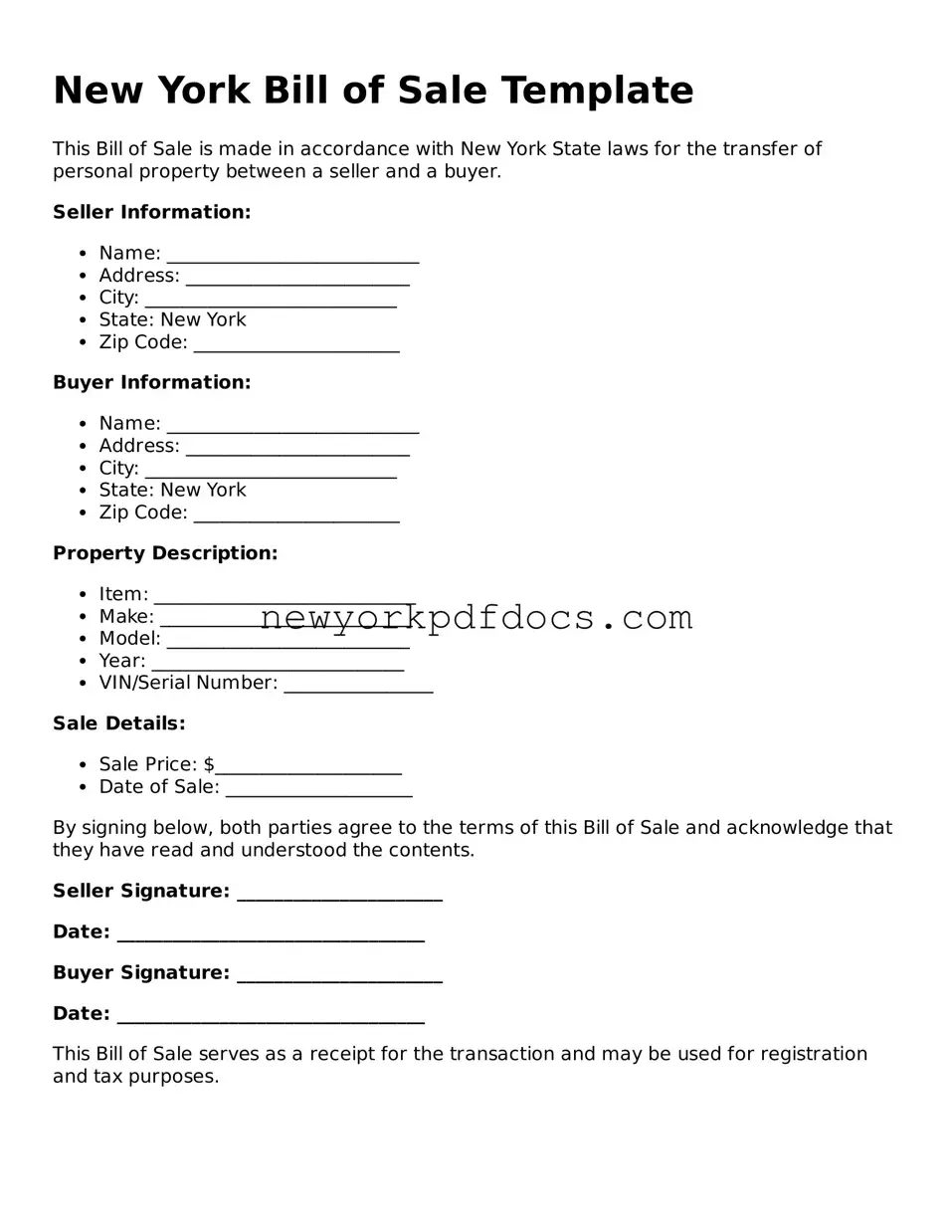Filling out the New York Bill of Sale form can seem straightforward, but many individuals encounter common pitfalls. One frequent mistake is neglecting to include all necessary details about the item being sold. Buyers and sellers must provide specific information, including the make, model, year, and Vehicle Identification Number (VIN) for vehicles. Omitting any of these details can lead to confusion and potential disputes later.
Another common error is failing to include accurate personal information. Both parties must clearly state their names, addresses, and contact information. Inaccuracies in this section can complicate future communications and may affect the enforceability of the sale.
Many people also overlook the importance of signatures. Both the seller and buyer must sign the Bill of Sale to validate the transaction. Without these signatures, the document may not hold up legally. It is crucial to ensure that both parties are present to sign at the time of the sale.
Additionally, some individuals forget to date the Bill of Sale. The date of the transaction is essential for record-keeping and may be required for registration purposes. Leaving this field blank can create complications down the line.
Another mistake involves the method of payment. The form should clearly state how the payment was made, whether it was cash, check, or another method. This information protects both parties and provides clarity regarding the transaction.
People often fail to include any warranties or guarantees associated with the item. If there are specific conditions regarding the sale, such as "as-is" or any warranties provided, these should be clearly stated. This omission can lead to misunderstandings and disputes post-sale.
Some individuals do not keep a copy of the completed Bill of Sale for their records. Retaining a copy is vital for both parties, as it serves as proof of the transaction and can be necessary for future reference or legal matters.
Another mistake is not verifying the identity of the other party. It is essential to confirm that the seller or buyer is who they claim to be. This step can prevent fraud and ensure a legitimate transaction.
Lastly, many people underestimate the importance of reviewing the completed form before submitting it. Errors can be easily overlooked, but taking a moment to double-check the information can save time and hassle later. Ensuring accuracy is key to a smooth transaction.
